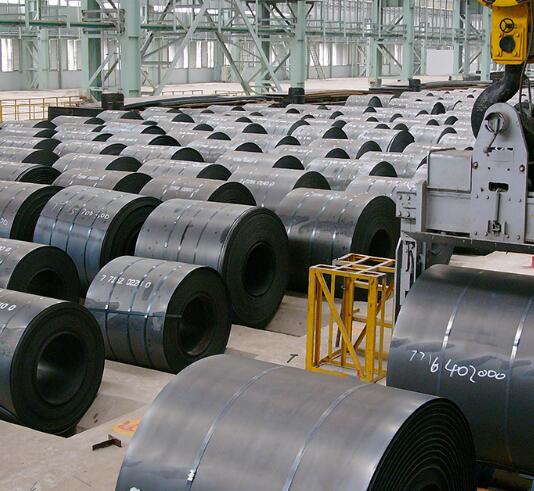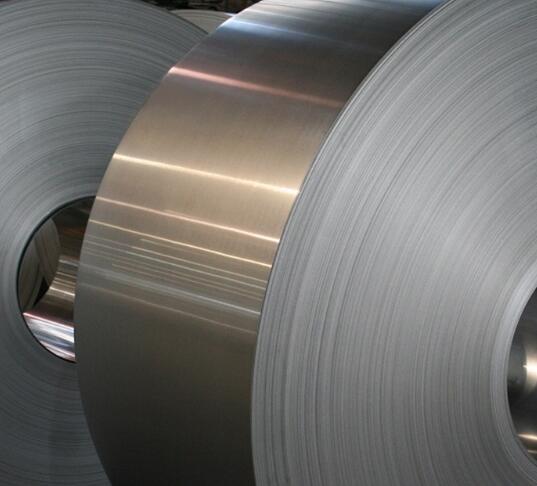The main difference between hot rolled steel and cold rolled steel is the way they are processed. Hot-rolled steel is steel that has been rolled at high temperatures, while cold-rolled steel is essentially hot-rolled steel that has been further processed in cold-rolled material. Here, the material is cooled and then annealed and/or tempered and rolled. Different grades and sizes of steel can be hot-rolled or cold-rolled. Understanding the differences between hot-rolled and cold-rolled steel can help you determine the type that best suits your needs.
During the hot rolling process, steel is heated at above its recrystallization temperature, which is typically higher than 1700°F. Once this is done, the steel can be easily shaped and formed. Hot rolled steel is used across diverse industries and comes in multiple grades, each of which offer their own unique characteristics.

The hot rolling process has a significant effect on the properties of steel. By heating steel above its recrystallization temperature and then cooling it at room temperature in a process known as normalization, the steel’s microstructure undergoes permanent changes, resulting in enhanced toughness and ductility. This additional ductility makes the metal easy to form and bend.
The hot rolling process also affects the overall shape of the finished metal piece. Hot rolled forms can be much larger than cold rolled forms. However, since hot rolled steel is heated and cooled, it is susceptible to shrinkage, giving less control over the shape and size of the finished product. One of the easiest ways to tell the difference between hot rolled and cold rolled steel is by touching the surface: hot rolled steel has an uneven surface while cold rolled steel is oily to the touch.
One of the primary benefits of hot rolled steel is its cost-effectiveness. Hot rolled steel can be formed and shaped immediately after heating without the need of reheating. Since the hot rolling process can take place without any delays, hot rolled steel can be produced in large quantities, which keeps its market price lower when compared to cold rolled steel.
To begin the hot rolling process, billets of steel are heated in a furnace until they reach temperatures above the recrystallization point. At McDonald Steel Corporation, we typically heat steel to 2300°F. The furnace evenly distributes heat throughout the length of the metal to make it malleable and easy to form.
Next, the steel billets exit the furnace and travel through our eleven stand cross-country bar mill. This system includes a roughing stand and multiple two-high roll stands. As the metal travels through the stands, it is squeezed, shaped, and elongated until it leaves the last roll stand as a 140 foot long section.
After that, the rolled lengths of metal are set in a cooling bed. The entire process, from the heated furnace to setting a newly rolled shape on the cooling bed, takes less than two minutes. At the end of the process, the original square or rectangle profile of the billet has changed to an asymmetrical or irregular section.
Hot rolled steel is cost-effective, ductile, tough, and easy to produce quickly. However, the cooling process can leave the final product slightly uneven and smaller than it was during the initial forming process. This makes hot rolled steel ideal for heavy-duty industrial applications.
Some of the most popular applications in different industries include the following:
● Agriculture and mining. Hot rolled steel is frequently used to make equipment components and grouser bars.
● Bridges and Infrastructure Builds. Grid decking and expansion joints can be made from hot rolled steel.
● Hot rolled steel can be used for industrial fasteners and sheet piling connectors.
● Government and defense. Ship deck rails are frequently made from hot rolled steel because of its toughness.
● Material handling. Manufacturers use hot rolled steel for fork truck parts, crane rail joints bars, and tram or elevator railing.
● D-bars, insulated and standard joint bars are made from hot rolled steel.
● Automotive manufacturers use hot rolled steel to make door hinges and truck rims.
● Water Transmission. Pipe couplings and spigot sections can be made from hot rolled steel.
Ultimately, hot rolled steel forms are an excellent choice for projects that require tough but cost-efficient material options.
Common Grades of Hot Rolled Steel and Their Applications
Hot rolled steel processing methods can be used to produce a wide variety of steel grades, each of which have their own unique properties and best use cases. At McDonald Steel Corporation, we produce the following types of hot rolled steel:
This low carbon steel is between 0.25% and 0.29% carbon by weight. The composition of the metal makes it easy to machine and weld, and it has excellent strength and mechanical characteristics during its lifespan. In fact, it’s named “A36” steel because its minimum yield tensile strength is 36,000 psi. This is an ASTM-designated steel.
A36 steel is commonly used to make structural components and is available in rectangular bars, round bars, square bars, round tubes, shafting, channels, angles, plates, and tread plates.
These two grades of hot rolled steel are very low carbon. C1010 steel is composed of 0.08% to 0.13% carbon by weight, and C1018 ranges between 0.14% and 0.20% carbon by weight. These low carbon amounts make the two metals very structurally similar, though the minute differences result in slight differences in tensile strength and ductility. Manufacturers can easily form, machine, and weld these metals. Common applications include fasteners, bolts, and tubing.
This AISI-designated metal is between 0.42% and 0.50% carbon by weight, making it a medium carbon steel. This metal is stronger than most other metals on this list, and the carbon increases its responsiveness to heat treatments like quenching and annealing. C1045 steel is primarily used for structural components due to its high strength.
A572 is a high strength, low alloy steel plate that is produced in Grades 42, 50, 55, 60 & 65, with each grade signifying the material’s yield strength. This metal is used for a range of structural applications, such as buildings, bridges, rail parts and more.
This metal, also known as weathering steel. is a corrosion-resistant, high-strength, low-alloy steel plate. Due to its resistance to atmospheric corrosion, it is often used for welding, riveting or bolting in construction applications, primarily for bridges and buildings.
This through-hardened material contains 0.05 to 0.15% alloying elements used to refine the grain microstructure. Its yield strength is between 40 and 110 ksi with good weldability.
Cold rolled steel is essentially hot rolled steel that has been further processed by being allowed to cool at room temperature and annealed or temper rolled. Cold rolling produces steel with closer dimensional tolerances and a wider range of surface finishes than hot rolling. It is also up to 20% stronger than hot rolled through the use of strength hardening.

When making more precise shapes, the process involves:
1. Breakdown
2. Semi-Finishing
3. Sizing
4. Semi-Roughing
5. Roughing
6. Finishing
Cold rolled steel typically results in a product with a better, more finished surface with closer tolerances. It also yields smoother surfaces that are oily to the touch. Other advantages include:
● Can be used in precise applications
● Harder and stronger than hot rolled steels
● Increased hardness, resistance against tension breaking, and resistance against deformation due to work hardening
● Aesthetically pleasing finish with a wider range of surface finishes
Cold rolled steel is used in applications where tolerances, surface conditions, concentricity, and straightness are factors. It also offers a more aesthetic and visually appealing surface. Other applications include:
● Home Appliances
● Metal Furniture
● Aerospace Structural Components
● Automotive Parts
Copyright:@2020-2021
Comments Please sign in or sign up to post.
0
0 of 500 characters used